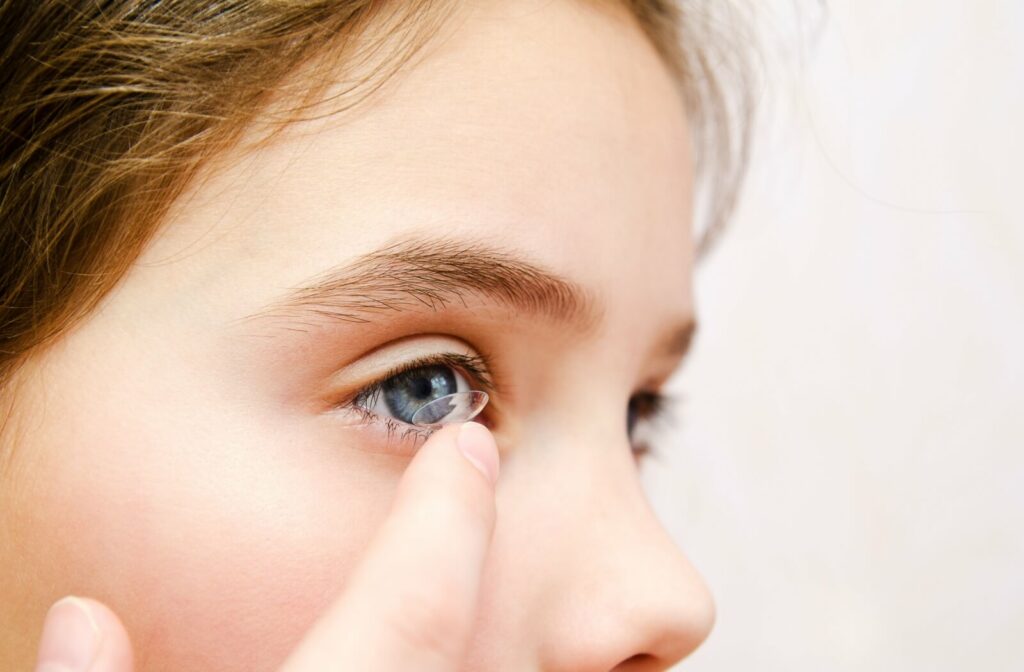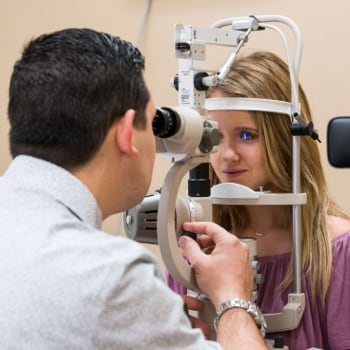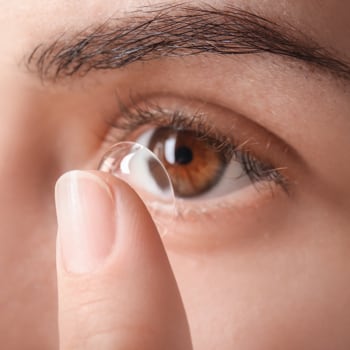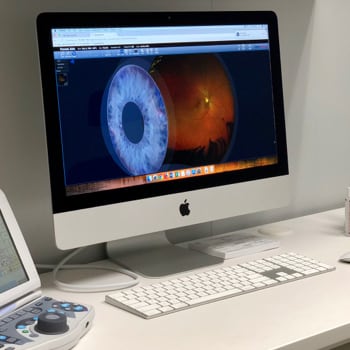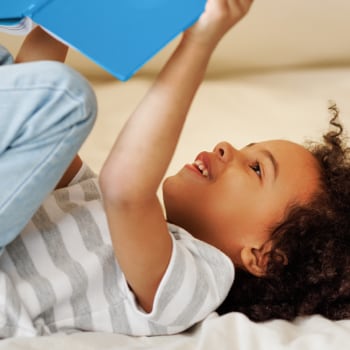Watching your child squint at the board in class or struggle to read their favorite bedtime story can tug at your heart. You want to do whatever you can to help preserve their vision—now, and in the future.
That’s where MiSight contact lenses come in. Treating myopia, commonly known as nearsightedness, isn’t just about wearing glasses or contact lenses for clearer sight—it’s about setting your child up for a lifetime of clear vision. MiSight contact lenses work by cueing the eye to stop growing and slowing the progression of myopia in children.
Your optometrist can diagnose myopia during a routine eye exam and determine if MiSight lenses are right for your child.
What Is Myopia?
Myopia, or nearsightedness, is an eye condition where distant objects look blurry while close objects are clear. This happens for 2 reasons:
- The eye has grown too long
- The cornea (the eye’s clear front dome) is too curved
In either case, the light entering your eye focuses in front of the retina rather than on it. Your retina then sends this information up the optic nerve to the brain. However, because the light wasn’t focused correctly on the retina, the images that your brain receives end up blurry. This can make it tough to see the board in class or recognize faces from afar.
Risk factors for myopia include genetics—if one or both parents are myopic, the likelihood increases—as well as environmental factors such as prolonged screen time and lack of outdoor activities. It’s important to identify and address myopia early because, as the eye continues to grow, untreated myopia can worsen over time and potentially lead to more severe eye conditions, such as:
- Cataracts
- Glaucoma
- Myopic macular degeneration
- Retinal detachment
Poor vision can greatly impact a child’s learning, meaning the steps we take now can set a child up for success in the future.
Introducing MiSight Contact Lenses
Myopia is becoming more common, with some predictions saying that around 50% of the population will have some amount of myopia by 2050. It’s basically a coin flip on whether your child will develop the condition, but experts are hard at work developing solutions! This brings us to MiSight.
MiSight is more than just a contact lens; it’s a targeted way to manage myopia. Designed specifically for little eyes, these soft contact lenses can be worn during the day and discarded at night, making them comfortable to wear and eliminating the need to clean the lenses. Children as young as 8 have confidently inserted and removed MiSight lenses all on their own.
MiSight lenses work with a dual-focus design. Think of the lens like a bullseye, with a series of concentric rings in the center. 2 of these circles are correction zones, giving your child clearer vision just like traditional contacts.
The other 2 rings are treatment zones. They defocus light so it lands in front of the retina and signals the eyes to stop growing lengthwise. Think of it as the contacts throwing up a little stop sign so myopia will hit the breaks.
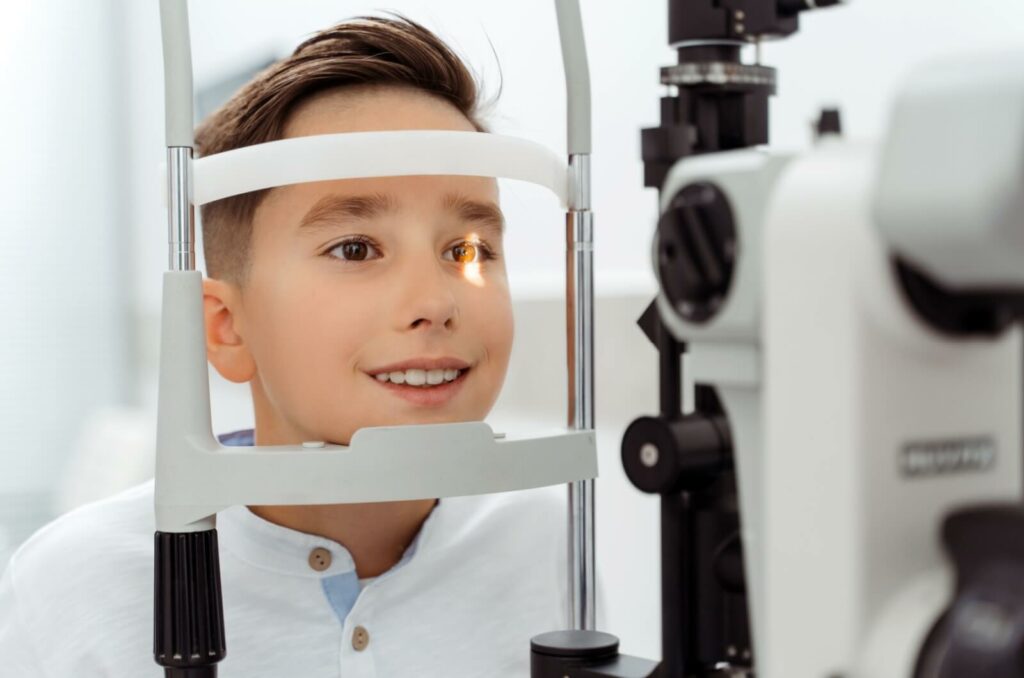
The Benefits of MiSight
The long-term benefits of MiSight are plenty. For starters, these lenses provide clear vision throughout the day without the hassle of glasses. Many adults enjoy the freedom contacts offer, so kids can too! Children can enjoy outdoor activities, engage in sports, and participate in classroom activities without worrying about breaking their glasses.
Perhaps more importantly, MiSight’s effect on kids with myopia is impressive! The benefits include:
- It’s effective on around 90% of kids
- It offers the same visual acuity as traditional contact lenses
- Most kids are able to wear MiSight lenses without issue
- While the lenses tend to work better on younger kids, they’re reasonably effective for teens
- They can slow myopia progression by around 50%
Beyond the vision benefits, MiSight positively impacts a child’s quality of life. Up to 80% of learning is visual. So when your child doesn’t have to worry about seeing the board or reading their homework, it’s 1 less barrier holding them back from success.
Signs Your Child May Have Myopia
We can’t stress enough how important regular eye exams are for protecting your child’s visual health. Problems often slip under our notice. Kids may assume their blurry vision is normal, especially if it’s the only way they have ever seen the world. Other times they simply don’t have the words to explain what they’re going through. Parents who’ve had to calm down a crying child understand this better than most.
Make bringing your kids in for an eye exam a yearly routine so we can keep up with their progression. Between these trips, keep an eye out for these tell-tale signs that your child could have a vision problem:
- Frequent squinting when trying to see distant objects
- Complaints about not seeing the board at school clearly
- Missing balls during sports
- Sitting too close to the TV
- Holding books very near to the face
- Consistently rubbing their eyes
- Frequent headaches, particularly after using screens or reading
Being alert to these signs and having open conversations with your child about their vision can guide you toward the right steps for eye care.
Clearer Days Are On the Horizon
When considering MiSight for your child, assess their readiness for contact lenses. Are they responsible enough to handle the daily routine of wearing and caring for lenses? Our Great Hills Eye Care team can help determine their suitability during your appointment and offer insights tailored to your child’s needs.
MiSight offers a promising path for parents seeking to manage their child’s myopia effectively, so let’s get you moving! Book an appointment with us today.

